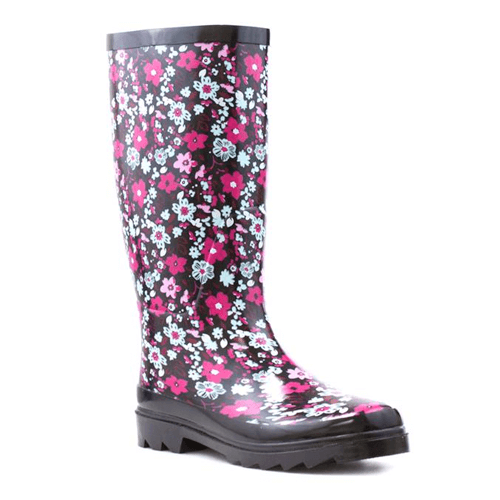Boots are traditionally associated with autumn/winter looks. Jeans tucked into boots, thick knitted tights and women's ankle boots, jumper dresses and knee highs; they’re the style staples we rely on every year. But what if boots are actually ok to wear all year round? Sure, you might find summer too warm a season to wear over the knee boots, but ankle boots are proving to be a popular trend for spring/summer. When you think of seasonal styles, many assume it’s trousers and boots for winter and dresses and sandals for summer, but fashion blurs lines and seasonal styles are much broader these days. Boot season is becoming a thing of the past and we’re here to tell you why.

First, let’s start with the practical reasons. Women are not packing their boots away with their winter wardrobes because the ever-changing weather means you never know when you’re going to get a downpour or a chilly day. Boots are waterproof and keep your feet dry, and for that reason alone women are wearing boots all year round. Take festival season for example, muddy fields are a nightmare and ladies' wellies, while they are convenient, are often limited in options. Ankle boots however have versatile styles and they will keep your feet warm and clean. They’ve particularly become a style staple when teamed with denim shorts so while you may not realise it, boots are appropriate and, in some situations, necessary wardrobe additions for spring and summer.
So now we’ve established boots are ok to wear in summer, let us give you some inspiration. Cowboy style ankle boots look great teamed with denim shorts. It’s a style that never goes out of fashion and you’ll often see your fave celebs sporting this style year after year. You can modernise this trend however by varying your choice of ankle boots. Opt for ankle boots with hardware – studs, zips or buckles. The shorts and boots trend is all about relaxed ankle boots with a chunkier heel as this outfit choice is more associated with daywear and need to be comfortable as well as stylish.
Another popular outfit option is laced boots with floral dresses. Tea dresses or cami dresses with prints are made edgy with a pair of womens lace-up ankle boots. This look pairs perfectly with military boots or you could also team this type of outfit with a pair of Chelsea boots. Sure, tea dresses look completely stunning with open toe sandals also but not everyone has time for a pedicure and on those days, boots are welcomed with open arms. To take this outfit into the evening you could also swap the lace up boots for a smarter ankle boot, similar to ones you might wear of work.
Sock boots feel like they were made for spring/summer. If you’ve ever tried tucking jeans into this type of boot, you will understand this statement quite well. Sock boots are better with bare legs and the spring/summer weather makes them bearable to wear.
Heeled ankle boots will dress up any maxi or ¾ length dress and look stunning on nights out. If you’re going out for dinner or drinks, they give the dress an edgier look turning feminine into chic. There are so any boots and shoe options to choose from but don’t be afraid of the seasons. Sure, practicality often dictates when you can wear shoes, but boots are more versatile wardrobe additions. Team them with a dress, wear with shorts, or pair them with jeans, don’t be afraid to try different looks.
There are so any boots and shoe options to choose from but don’t be afraid of the seasons. Sure, practicality often dictates when you can wear shoes, but boots are more versatile wardrobe additions. Team them with a dress, wear with shorts, or pair them with jeans, don’t be afraid to try different looks.